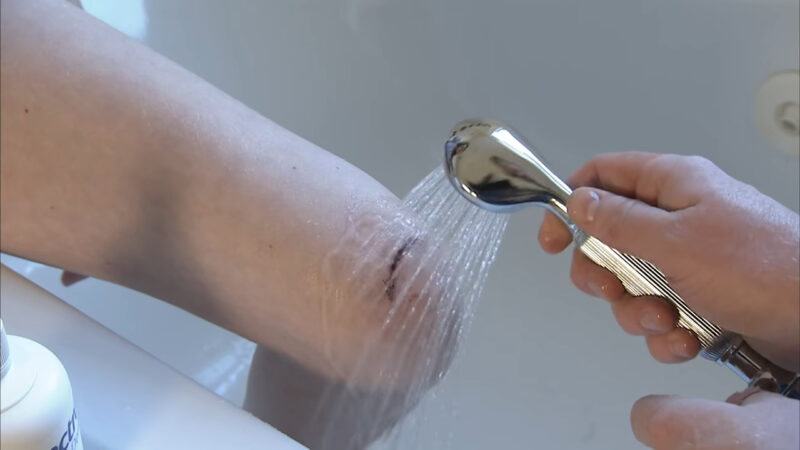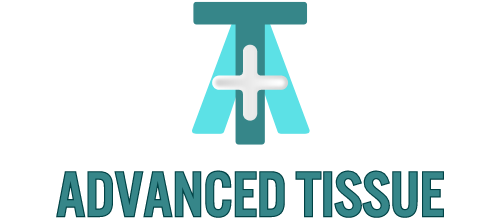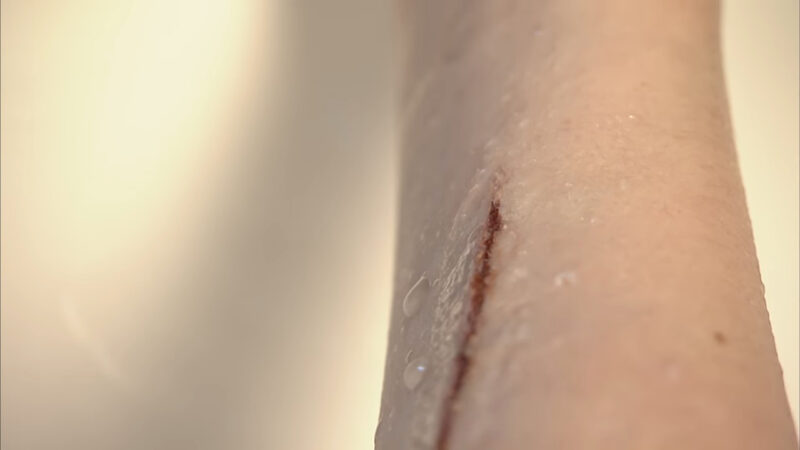Scabs are signs of healthy healing, forming as protective layers over damaged skin to prevent infection and blood loss. Once healthy tissue regenerates, your body will eventually push away scabs to make room for the new skin.
While scabs aid wound healing, they’re not exactly easy on the eyes. Plus, as Healthline noted, they can take anywhere from days to weeks to fully heal. Sometimes they can even lead to permanent scarring. The good news is that there are safe ways to get rid of scabs that can prevent scars from developing later.
Here’s your quick guide to proper scab treatment and infection prevention methods:
Don’t Pick Your Scab
As tempting as it may be, refrain from picking or scratching at scabs. You run the risk of opening the scab, which can cause bleeding and eventual scarring. According to Healthline, picking scabs can introduce bacteria or trauma to the affected area, ultimately delaying recovery and increasing the risk of infection.
Cover It Up
Apply a bandage or dressing to the scab to not only prevent you from picking but also to further protect the scab from bacteria and infection. Reader’s Digest noted that covering the scab can even speed up the healing process.
Keep the Area Clean and Moist

Regular cleaning can prevent debris and germs from reaching the affected area and stalling the healing process. Gently wash scabs and surrounding areas with mild soap and water, avoiding rough scrubbing motions that may scratch or irritate the area. Moist wound beds are more susceptible to healing, so apply petroleum jelly or antibiotic creams to help the skin heal quickly.
Make Healthy Choices
Adam Friedman, M.D. and associate professor of Dermatology and director of the Supportive Oncodermatology Clinic at George Washington School of Medicine and Health Sciences told Reader’s Digest that “eating a healthy diet, avoiding sun exposure, limited alcohol exposure and not smoking” can further promote healing and get rid of scabs.
Watch for Signs of Infection
While these treatment methods are certainly preventative measures, there’s still a chance of scab infection. Healthline highlighted increasing size, worsening pain, drainage, bleeding and fever as signs of an infected scab. Visit your doctor if the symptoms continue to worsen.
Sleep Tight, Heal Right: How Rest Fuels Your Recovery
Getting enough sleep isn’t just about feeling refreshed – it’s a crucial piece of the healing puzzle. Studies show that even minor sleep disruptions can hinder wound healing, while a good 7-9 hours of shut-eye every night acts like a turbo boost for your body’s repair mechanisms. So, prioritize those cozy bedtime routines and embrace the power of slumber for a smoother, faster recovery.

Fuel Your Body, Supercharge Your Healing: The Nutrient All-Stars
Think of your body as a construction zone, and your food as the building materials. Certain nutrients are like skilled workers, playing key roles in tissue regeneration and healing. Protein, selenium, vitamins A and C, and zinc are your MVPs in this process. So, fill your plate with fruits and veggies, lean protein sources like poultry, beans, and fish, healthy fats from avocado and olive oil, and whole grains. Nourish your body, and it will reward you with a speedy recovery.
Smoke Signals: Why Puffing Can Derail Your Recovery
Cigarette smoke is the enemy of healing. It acts like a double whammy, reducing blood flow (think traffic jams in your circulatory system) and sabotaging your immune system’s defense troops. Nicotine and its buddies in smoke also weaken your body’s natural infection-fighting abilities. So, ditch the smokes and give your recovery the green light!
Remember, these are just snippets – feel free to expand on each point and tailor them to your specific blog post style and target audience. Use vivid language, personal anecdotes (if relevant), and actionable tips to make your message resonate with your readers. Good luck!
When to see a doctor

Most scabs fall away on their own. However, see a doctor if a wound with a scab has any of the following characteristics:
- severe pain
- continuous oozing or bleeding
- no improvement after a few days
- gradual worsening of symptoms
- swelling that worsens
Also, see a doctor if a fever or chills develop.
When a person sustains an injury that is very deep or painful, they should seek medical aid.
It is also important to receive medical attention for wounds caused by a human bite or a dirty or rusty object. If a wound becomes infected, consult a healthcare provider.
FAQs
Is it okay to use hydrogen peroxide on scabs?
Avoid harsh antiseptics like hydrogen peroxide! They can actually damage new skin cells and delay healing. Stick to gentle cleansing with mild soap and water.
What about using honey on scabs?
Studies suggest honey can be a safe and effective natural remedy for wound healing and infection prevention. However, always test for allergies before applying directly to the scab.
How can I reduce itching around scabs?
Applying moisturizer or aloe vera can help soothe itchiness. If it’s unbearable, consult your doctor about anti-itch creams or oral medication.
Are there natural ways to boost recovery besides sleep and diet?
Managing stress through yoga, meditation, or spending time in nature can indirectly aid healing by lowering cortisol levels, which can hinder wound repair.
Final Words:
Remember, patience and proper care are key to scar-free recovery. While scabs may be annoying, they’re a sign of your body’s hard work! Prioritize gentle cleaning, healthy habits, and a doctor’s guidance when needed, and your skin will thank you for it.







